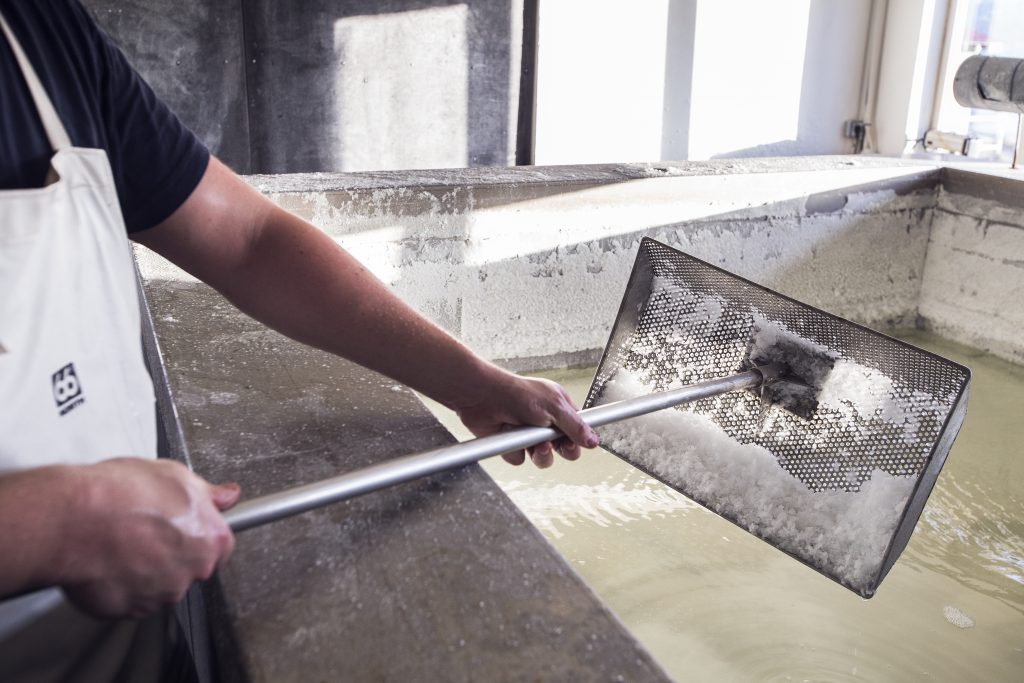Interview: Saltverk Founder Björn Steinar Jónsson
On the origins of Iceland’s gourmet, hand-harvested sustainable sea salt

In a tiny facility within Iceland‘s remote Westfjords, Saltverk founder Björn Steinar Jónsson hand-harvests flaky salt from seawater using a sustainable method developed in the 17th century. Jónsson is one of the only salt-producers in Iceland today and the first to revive this 100% geothermal production method. He cares so much about sustainability that the brand also offsets their carbon footprint from product transportation by planting trees. Further, a taste quickly reveals that Saltverk’s products are no ordinary salts. Whether it’s the brand’s traditional flaky sea salt, their lava salt or Arctic thyme blend, Jónsson’s products are gourmet accoutrements—celebrated by chefs, both professional and amateur, worldwide.

This year has been one to rebuild for Jónsson. The winter months that stretched from the end of 2019 into the start of 2020 brought uncommonly harsh weather. “In previous years of operation, because of our remote location, the weather has given us challenges regarding transporting our salts, but last year was the worst weather in 50 or so years. The winds were so strong that one day we had the roof taken off of our largest production house. We had several occasions of electricity going off for days. For extended periods, we couldn’t utilize our seawater pumps.” Saltverk battled months of disruption—and the team spent a lot of this year (in their remote lockdown) putting things back together. Now, everything is fully operational again.

It was a blend of culinary curiosity and engineering education that brought Jónsson to the Westfjords. “I was living in Copenhagen, just about to finish my engineering studies,” he says, “and I used to work in restaurants there.” As his interest in the restaurant world grew, he recognized that nobody was making salt in Iceland anymore. “Initially, I wanted to see if that was something we could explore,” he adds.
“In the phase before our first salt-making experiments, I started exploring different ways salt is made in Scandinavia—where many countries use timber as the energy source. I found records of salt production in Iceland, at a salt farm in the Westfjords, exactly where we have our production today, which used geothermal energy in the 17th century. In the summer of 2011, we tried making salt from geothermal energy and that first product we had, we sent to a chef to try and that’s how this got rolling.” Geothermal energy is a vast renewable resource in Iceland.

“I am fascinated by the process—by making something that you can put your hands on and delivering it to someone to use in their kitchen,” he continues. Their success, he explains, comes from the fact that “we are pumping sea water from this remote natural place and simply not adding anything and not taking anything out. The product is as pure as it gets—a natural product evaporated with natural energy.”

As we’ve mentioned, Saltverk puts out covetable variants, too. “Our variations come from looking at things that are relevant to us in terms of where we are from in Iceland, in the Westfjords,” Jónsson says. “The Arctic thyme is something that is only available in the Arctic region. You can only find it in Iceland, Greenland and the Faroe Islands. When you smell it, it almost smells like lavender. It has a rather more distinctive scent than the thyme people are used to in their cooking. We wanted to take that to make something unique—authentically from Iceland.” Our personal favorite, the lava salt, reflect on the island’s volcanoes. Its color comes from natural activated charcoal (the only other ingredient used in its production).

Professional chefs are incredibly important to the brand. The first place to experiment with Saltverk salt was DILL, the first restaurant in Iceland to receive a Michelin star. “We’ve used feedback from chefs to improve on our products, to figure out what matters to those who use it professionally,” Jónsson says. He also acknowledges that it’s helped with awareness, validation and even in defining the taste (as many chefs say Saltverk’s salt tastes more umami than other sea salts).

Ultimately, there’s no greater impact on the salt than the Westfjords themselves. “Back in 2010, Iceland was taking its first steps to get out of its financial crisis,” Jónsson says. “I wanted to make something that the people in the Westfjords were proud of, proud to see that something new could be made in such a remote region. We are set in a scenic landscape where you could have whales outside your windows and seals looking up at the house with our salt pats. It is 400 kilometers away from the capital, Reykjavik. From a practical standpoint, it is not optimal but for so many reasons it is of huge importance to us as a brand.” Perhaps all that spirit is in the salt too, for those with trained palates to decipher.
Images courtesy of Saltverk












